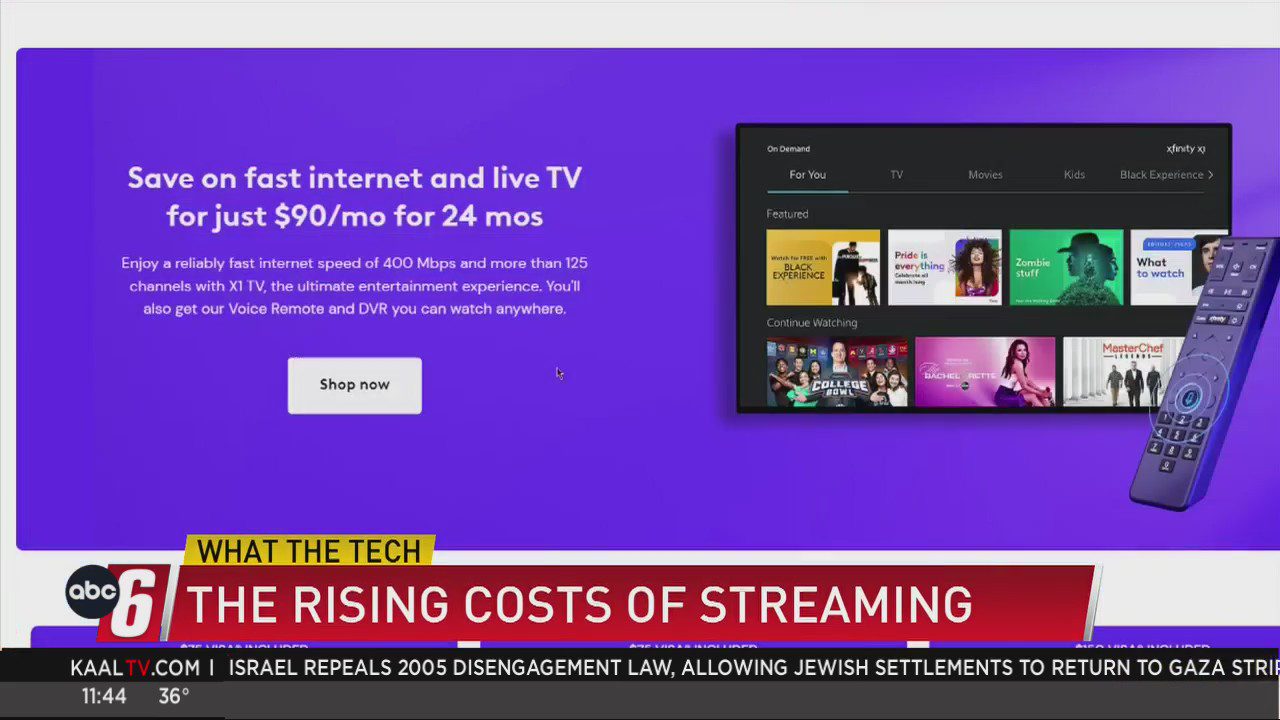What the Tech? The rising price of streaming
[anvplayer video=”5168772″ station=”998128″]
(ABC 6 News) YouTube TV will soon cost customers an extra $8 a month. Subscribers began receiving emails notifying them of another price increase from $65/per month to $73/per month. Back when many of its customers first cut the cord, the price for the live TV package has jumped from $35/month in 2017.
Now, with the rising costs to include channels in their lineup, those streaming companies have been forced to raise prices again and again.
Millions of cable and satellite subscribers cut the cord in the past few years in hopes of saving money. The difference between what they paid then and what they pay now is looking less and less like a great way to save a lot of money.
Cord cutters complained for years of the high cost of cable TV packages, but how do those prices compare now? How soon before the prices be identical?
Let’s look at the rising cost of streaming TV.

● YouTube TV costs $73 for over 100 channels.
● Hulu Plus Live TV is now $70 a month but also includes Hulu movies, Disney+, and ESPN+ in that price.
● Fubo’s basic package, 152 channels is $75 a month.
● Direct TV Stream’s price is $75 for 75 channels. and 140 channels for $110 a month.
So on average, you’re looking at around $75 or more to stream live networks and cable channels.
You’ll also still need to pay for the internet separately which is often around $75 per month. Taking that into account, streaming with YouTube, Hulu, Fubo, or Direct TV is going to be around $155 a month.
How does that compare with cable TV prices? it’s still cheaper to stream.
According to Xfinity’s website an internet and 125 channel package is $172 after 2 years of promotional pricing. Streaming is still cheaper, but not by as much as it used to be.
Depending on where you live and what you want to watch, you can save much more. For example, both T-Mobile and Verizon offer home WiFi service that requires no professional installation. Those plans start at $25/month and give most people fast enough internet speed to stream.
Using one of those home WiFi devices is highly dependent on your precise address as the device connects to nearby cell towers. If you don’t live close enough to one of those 5G towers your internet speed will not be fast enough for what you want to do or watch.
There are also a couple of other streaming companies to choose from that are less expensive than the others. For a reason.
Sling TV was one of the first all-internet TV companies. Its plans are a bit confusing. An Orange Plan offers some channels for $40/month. There’s also a Blue Plan with other channels for $40. Sling TV also bundles both packages together for $55/month. It’s important to note that Sling TV does not offer local TV channels. It’s a good deal if you have an antenna and can pick up the local channels you want to watch.
Philo is another choice for streaming and offers most of the cable networks, but Philo has zero sports channels. No ESPN, Golf Channel, NFL Network, or any other sports network. But it’s only $25 a month and is the best and cheapest option for non-sports fans.
There are other things you need to think about before cutting the cord or switching services.
● Do you save hours of content? Some services offer a limited amount of Cloud Storage
● How many people will be watching different channels at the same time? Most streaming companies limit the number of simultaneous screens.
● Are there certain channels you just HAVE to have? Channel lineups vary.
● What is the user experience like? Is it easy to find channels you want to watch?
● Can you create a list of favorite channels so you don’t have to spend a long time scrolling?
● Can each person in your home set up their own channel lineup and favorites? ● Does the streaming service offer discounts on bundles?